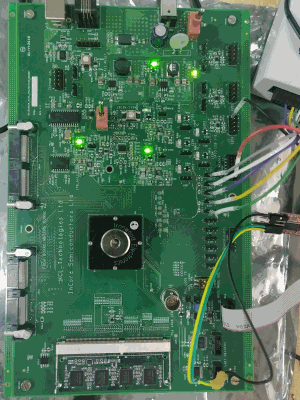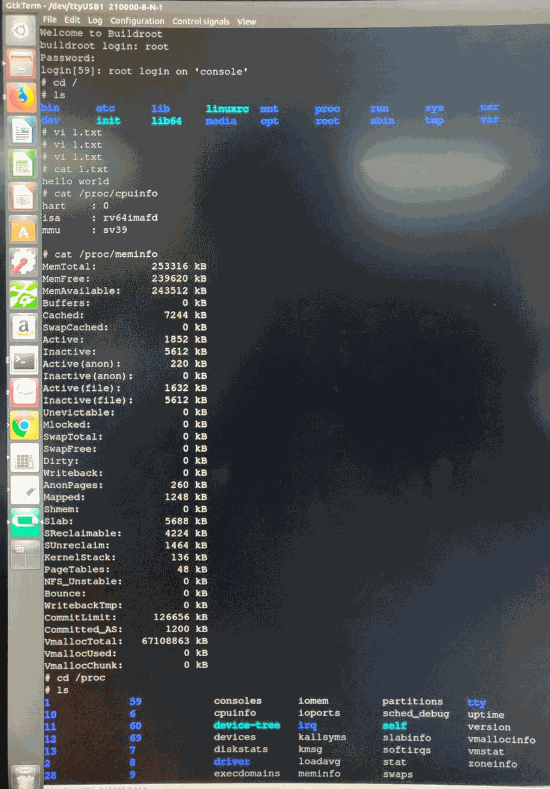Technology news: Shakti microprocessor program
Shakti microprocessor program
The SHAKTI Processor Program was started as an academic initiative back in 2014 by the RISE group at IIT-Madras. Realizing the limitations of the processor industry mentioned above, the initiative aimed at not only creating open-source industrial grade processors but also building associated components of a bigger eco-system - like interconnect fabrics, scalable verification platforms, peripheral IPs, etc. - which enables rapid adoption of the processors. Some of the major highlights of the program which make it a viable option for adoption are:
 For those of you who are not familiar, RISC-V is an open ISA (Instruction Set Architecture) developed as a project in 2010 by the University of California, Berkeley. First of all, an instruction set is merely the set of commands given to a CPU in machine language. Basically, it tells the CPU what it needs to do like, for example, add or compare.
For those of you who are not familiar, RISC-V is an open ISA (Instruction Set Architecture) developed as a project in 2010 by the University of California, Berkeley. First of all, an instruction set is merely the set of commands given to a CPU in machine language. Basically, it tells the CPU what it needs to do like, for example, add or compare. Currently clocking at 400MHz, DMIPS/MHz – 1.67, this isn’t by any means outclassing raspberry Pi performance (nor does it intend to). It is a test chip taped-out on Intel’s 22nm FinFET Technology. Furthermore, the fact that Linux was able to boot presents a proof of concept of design by which the project team could further move towards more production-grade SoC designs.
Currently clocking at 400MHz, DMIPS/MHz – 1.67, this isn’t by any means outclassing raspberry Pi performance (nor does it intend to). It is a test chip taped-out on Intel’s 22nm FinFET Technology. Furthermore, the fact that Linux was able to boot presents a proof of concept of design by which the project team could further move towards more production-grade SoC designs.
The SHAKTI Processor Program was started as an academic initiative back in 2014 by the RISE group at IIT-Madras. Realizing the limitations of the processor industry mentioned above, the initiative aimed at not only creating open-source industrial grade processors but also building associated components of a bigger eco-system - like interconnect fabrics, scalable verification platforms, peripheral IPs, etc. - which enables rapid adoption of the processors. Some of the major highlights of the program which make it a viable option for adoption are:
- Source code of all the components of the SHAKTI eco-system is open under the 3 part BSD license. This means a user could freely use, modify and circulate the source code without having to sign any NDAs, licenses or even notify the authors as long as the license header file remains. The SHAKTI program itself will not assert any patents and thereby removes the burden of paying royalties as well.
- The processors of the SHAKTI eco-system are build using the open-source RISC-V ISA. RISC-V has been designed for modularity and extensions, thereby perfectly fitting the prologue of "customization". The ISA also comes with a complete software stack, including compilers, operating systems, and debuggers, which are open source and thus also modifiable. Since the ISA does not dictate micro-architectural features, the software and hardware can be maintained by two complete different entities and yet be compatible. This allows for great re-usability and sharing of code-base across the community.
- The SHAKTI processors and the front-end (RTL) designs are developed using the open-source High Level Synthesis (HLS) language: Bluespec System Verilog (BSV). BSV equips the user to develop extremely modular and parameterized modules with defined interfaces. This feature facilitates the user to focus and modify only the designs of interest without having to break the rest of the flow. Today there exists a free bsv-parser which the community can use to develop open/proprietary compilers for BSV.
- Academia now has access to a real world working prototypes of processors which they can play with for free. This enables them to depart from the world of "simulators" and "emulation models" and try out their research and ideas in practice. They are no longer tied down by strict NDAs on publishing and can thereby participate more actively in shaping the future of the processor industry.
- A typical process of acquiring ISA or architectural licenses from companies like ARM can vary anywhere between 6-12 months. This increases the time-to market for the consumers. SHAKTI, can immensely reduce this time by avoiding such formalities and providing a powerful modular framework allowing small tech start-ups to only modify components of interest rather than building a solution from scratch.
- With minds from all over the community pouring in ideas and solutions, SHAKTI has the potential to become a state-of-the-art offering quickly
- An open-source eco-system such as SHAKTI promotes a mix-and-match environment where users can plug-in different open-source or proprietary IPs and innovate on new ideas and projects.
- Being completely open-source, it is close-to-impossible for external entities to add back-doors and black-boxes. This is of particular interest to strategic sectors of countries like India, which today depend on black-box solutions provided by industries which are headquartered in foreign countries.
- SHAKTI can also enable the software community drastically. Fearing strong patent lawsuits, software developers who own licensed HW IPs for development are forced to release only binaries rather source code and also provide minimal documentation. This leaves the software Libre community in dangling state, spending months and even years \emph{"picking up pieces"}.
RISC-V
 For those of you who are not familiar, RISC-V is an open ISA (Instruction Set Architecture) developed as a project in 2010 by the University of California, Berkeley. First of all, an instruction set is merely the set of commands given to a CPU in machine language. Basically, it tells the CPU what it needs to do like, for example, add or compare.
For those of you who are not familiar, RISC-V is an open ISA (Instruction Set Architecture) developed as a project in 2010 by the University of California, Berkeley. First of all, an instruction set is merely the set of commands given to a CPU in machine language. Basically, it tells the CPU what it needs to do like, for example, add or compare.Due to their lower power consumption, ARM (Advanced RISC Machine) instruction set-based chips have dominated smartphone, tablets and other small device markets. Shakti is The RISC-V based processor that has been designed with small, speed, and low-power consumption in mind.
Performance
 Currently clocking at 400MHz, DMIPS/MHz – 1.67, this isn’t by any means outclassing raspberry Pi performance (nor does it intend to). It is a test chip taped-out on Intel’s 22nm FinFET Technology. Furthermore, the fact that Linux was able to boot presents a proof of concept of design by which the project team could further move towards more production-grade SoC designs.
Currently clocking at 400MHz, DMIPS/MHz – 1.67, this isn’t by any means outclassing raspberry Pi performance (nor does it intend to). It is a test chip taped-out on Intel’s 22nm FinFET Technology. Furthermore, the fact that Linux was able to boot presents a proof of concept of design by which the project team could further move towards more production-grade SoC designs.According to industry analysts, RISC-V based chips such as Shakti could be major players in IoT, and AI with an extensive ecosystem is in place.

The Processor variants are of six categories with one Microcontroller (C Class) and five Processors (I, M, S, H, T Classes).

Members of the Shakti Processor Team : G. S. Madhusudan, Vishvesh Sundararaman, Arjun Menon, Vinod Ganesan, Shankar Raman, Neel Gala, Deepa N Sarma, Gopinathan M., Rahul Bodduna












Post a Comment